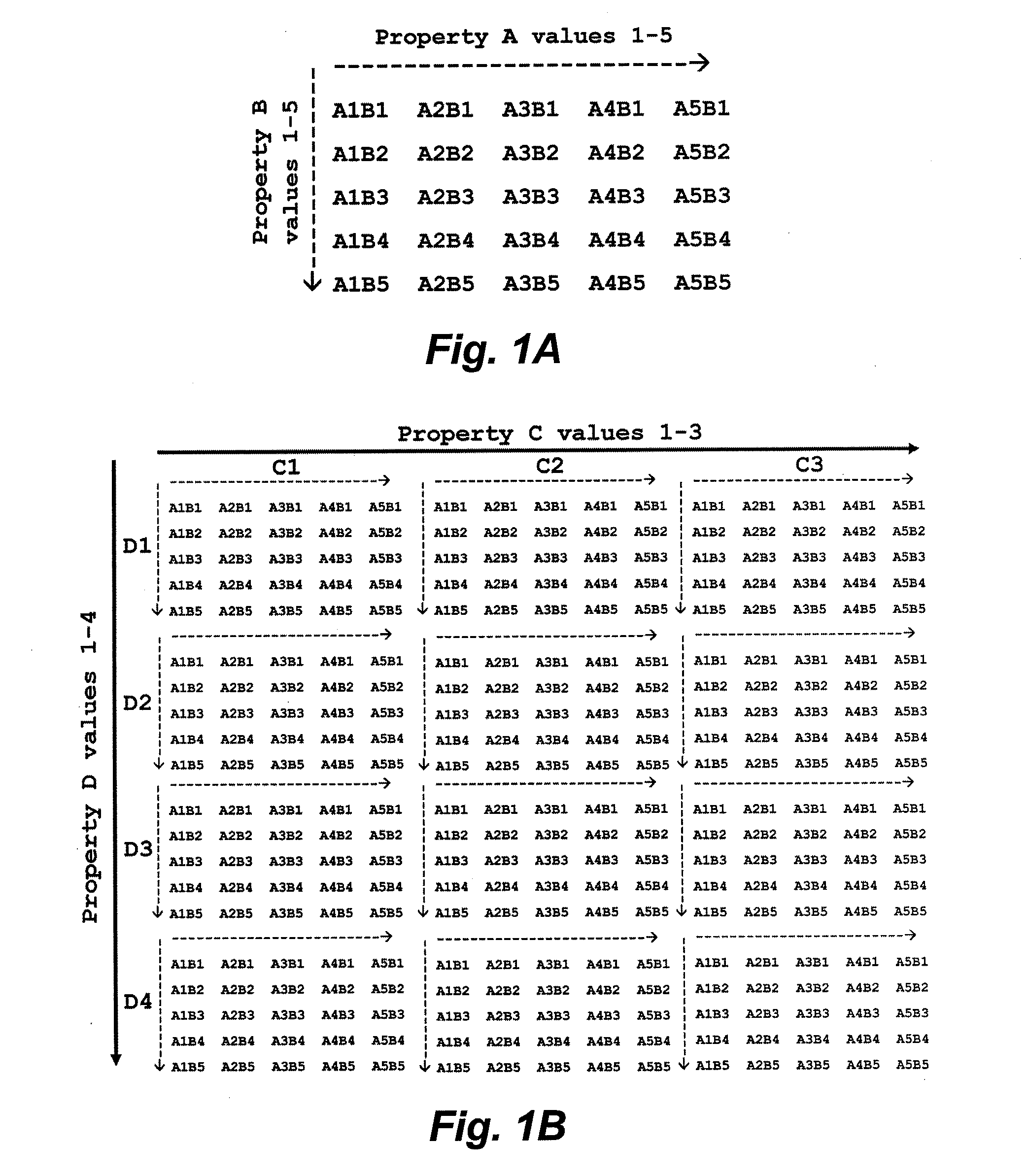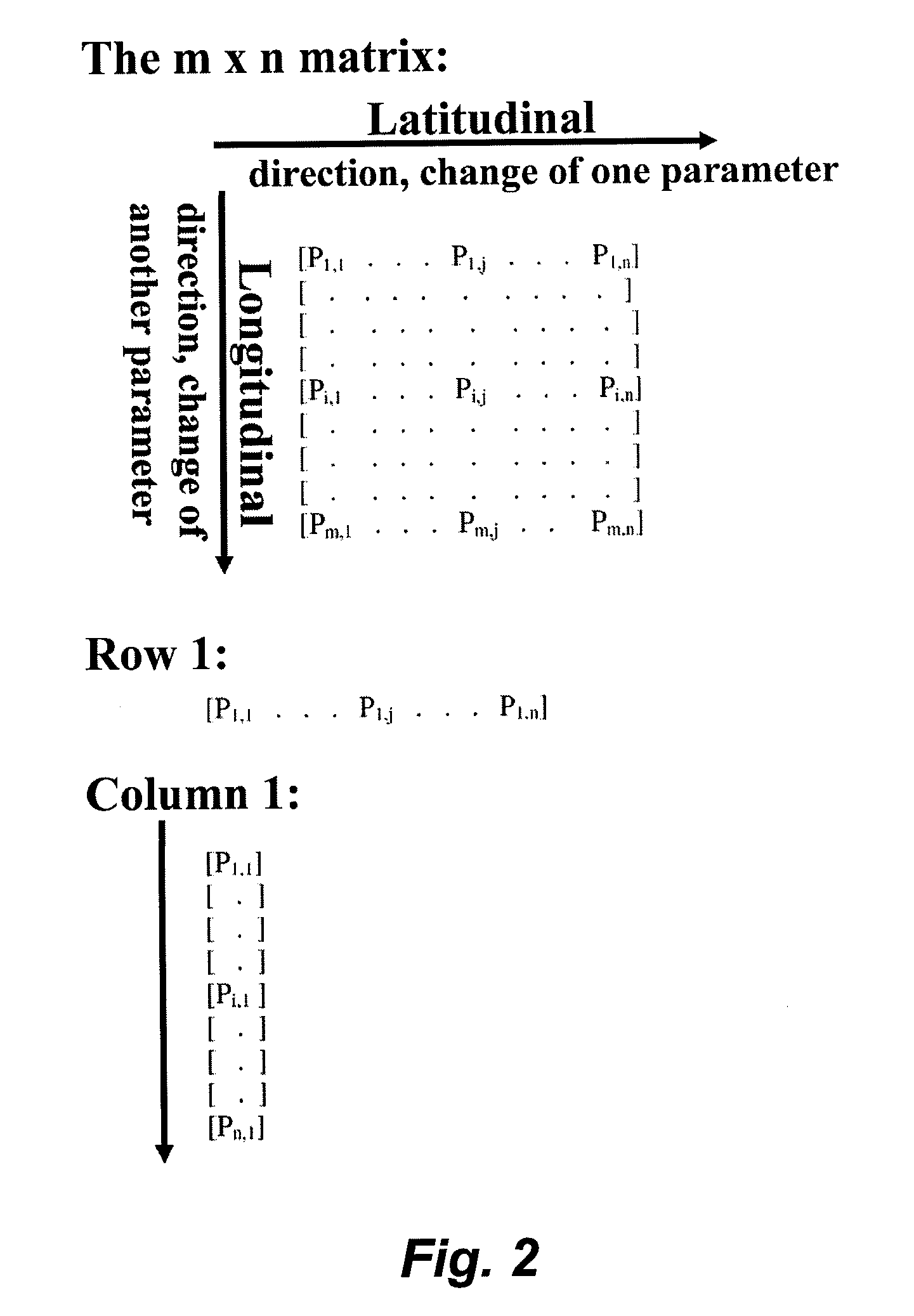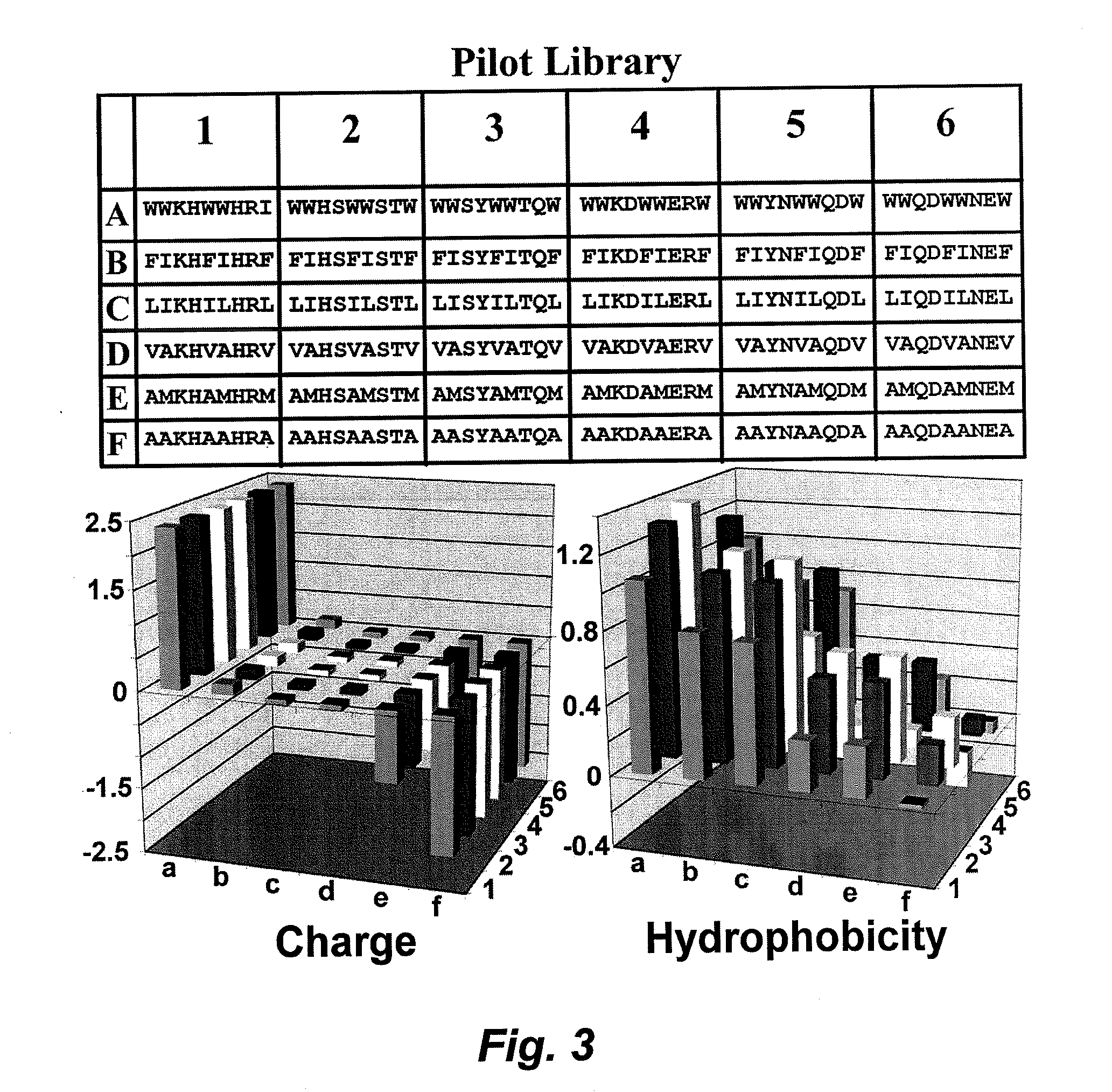Sparse matrix system and method for identification of specific ligands or targets
a matrix system and target technology, applied in the field of peptide engineering, can solve the problems of difficult and sometimes impossible to a priori predict the binding dynamics, and achieve the effect of improving the stability and half-life of such molecules and facilitating the addition of additional moieties
- Summary
- Abstract
- Description
- Claims
- Application Information
AI Technical Summary
Benefits of technology
Problems solved by technology
Method used
Image
Examples
example 1
Designing a Peptide Matrix Library for Target Binding
[0109]The target specificity is derived from variation in surface charge and hydrophobicity across various biological surfaces, and the probability of obtaining a “hit” (which is the peptide that specifically interacts with or binds to the biological surface) is governed by the large number of binding modes possible on a surface that has the appropriate bulk physicochemical properties. It is contemplated, that by sampling the parameter space at extremely sparse intervals in the parameters of charge and hydrophobicity, a very small library (e.g., a library of 100 peptides) can be used to identify peptides that are bound to the target or the surfaces of the target. These initial “hits” provide information about the charge and hydrophobicity at the surface of interest, forming the basis of developing small refined libraries that provide fine-tuned levels of binding activity and specificity.
[0110]Two major aspects of the peptide isola...
example 2
The Use of Peptide Matrix Library to Identify Peptides that Bind to Microbial Organisms or Generate a Finger Print for the Microbial Organisms
[0112]Peptides (sequences given in FIGS. 3 and 7) were synthesized using standard Fmoc solid phase chemistry on an Apex 396 multiple peptide synthesizer (AAPPTec, Louisville, Ky.) at 0.015 mM scale and labeled with 5(6)-carboxyfluorescein. Completed peptides were cleaved from the resin with 95% trifluoroacetic acid and appropriate scavengers.
[0113]Peptide samples were prepared at a concentration of 25 μM for screening against a variety of organisms by exposing immobilized bacteria to labeled peptides. For bacterial cell binding assays, cells were grown overnight, washed, and immobilized in a polylysine-coated 96-well plate. Fluorescein-labeled peptide samples were applied to immobilized bacteria, incubated for 10 minutes and washed extensively to remove unbound peptide. Samples were visualized by fluorescence microscopy. For each peptide, both...
example 3
The Use of the Peptide Matrix Library on Non-Bacterial Surfaces
[0117]The use of this technology is not limited to bacterial surfaces. Similar results were seen in testing of the pilot library against Chinese Hamster Ovary (CHO) cells and Candida albicans cells (strain 4741, a clinical isolate), showing that this technique extends at least as far as fungal and mammalian cell surfaces (FIG. 6).
[0118]To further demonstrate the general applicability of this method, we screened the initial pilot library against the bioinorganic surface of a sectioned human tooth. The fluorescein-labeled peptides in the initial pilot library were pooled and screened by Confocal Laser Scanning Microscopy as follows. The quadrants of the library were collected into four pools of 9 peptides each. Peptides were screened by exposing the pooled, 5(6)-carboxyfluorescein-labeled peptides to sections taken from human teeth (extracted during normal clinical practice), followed by visualization of the samples by Con...
PUM
| Property | Measurement | Unit |
|---|---|---|
| size | aaaaa | aaaaa |
| diameter size | aaaaa | aaaaa |
| hydrophobicity | aaaaa | aaaaa |
Abstract
Description
Claims
Application Information
 Login to View More
Login to View More - R&D
- Intellectual Property
- Life Sciences
- Materials
- Tech Scout
- Unparalleled Data Quality
- Higher Quality Content
- 60% Fewer Hallucinations
Browse by: Latest US Patents, China's latest patents, Technical Efficacy Thesaurus, Application Domain, Technology Topic, Popular Technical Reports.
© 2025 PatSnap. All rights reserved.Legal|Privacy policy|Modern Slavery Act Transparency Statement|Sitemap|About US| Contact US: help@patsnap.com



